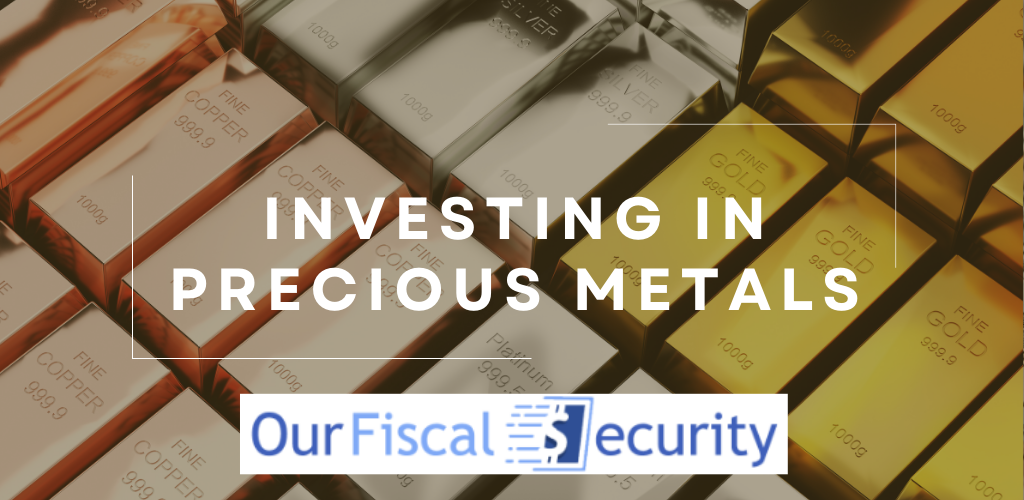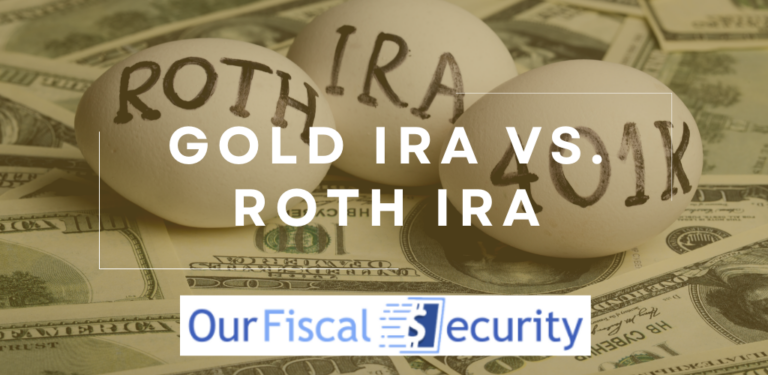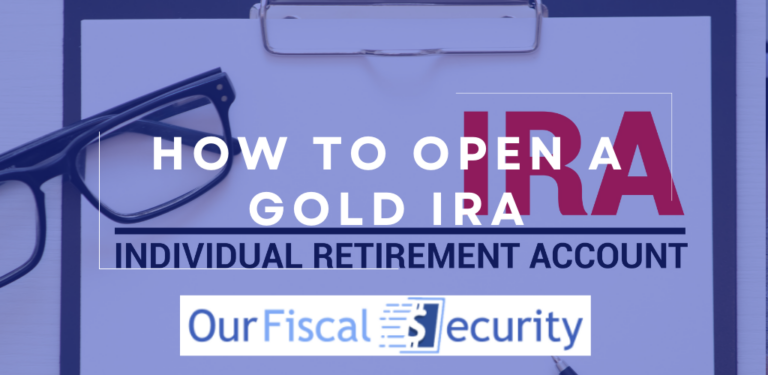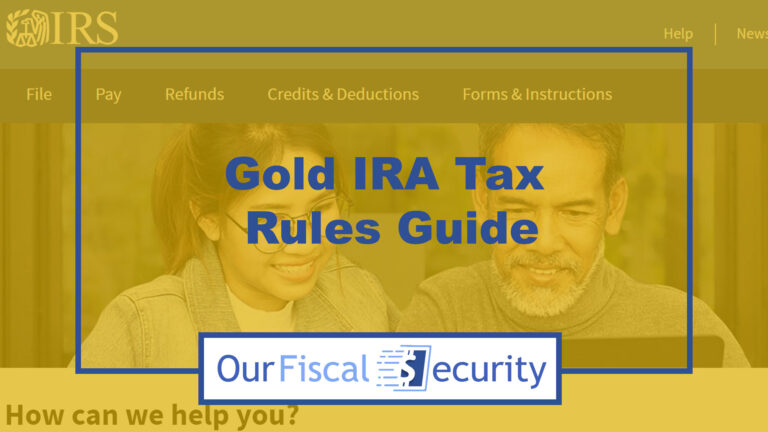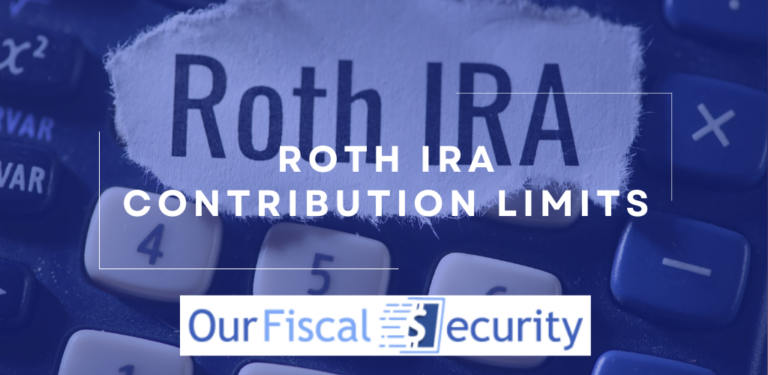Investing in Precious Metals
Investors know that a diversified portfolio is crucial to their success. As a beginner, you may believe that your investment options are limited to mutual funds, cryptocurrency, bonds, and stocks. In most cases, it’s what your financial advisor will tell you.
However, you have other opportunities beyond those equities and real estate. In fact, investing in precious metals could be right for you. Today, you will learn about the benefits, risks, and types of precious metal investments available.
Significance of Precious Metals Investment
Many people find that investing in precious metals is a sound financial decision for them. It’s important to learn of the significance of precious metals investing, such as:
Precious Metals in a Diversified Portfolio
Diversification means spreading your investments across many industries, asset classes, and geographic regions. This will help you reduce your risk while hopefully increasing your returns over time.
Ultimately, when you start diversifying your financial portfolio, you mitigate risk. Different asset classes have varying return and risk potential levels. Therefore, when you hold many of them, you can manage the risk easily and reduce the impact that a poorly performing investment might have.
Historical Performance of Precious Metals
Precious metals have become a safe-haven asset in times of market volatility and economic uncertainty. Whenever traditional investments, such as bonds and stocks, underperform, investors will turn to gold, silver, and other precious metals as a store of value.
Ultimately, they offer stability in uncertain times because of their enhanced performance, they can be held in physical form, and they have intrinsic worth.
Global Economy’s Influence on Precious Metals
When you diversify with precious metals, you can protect your portfolio and ensure that it adapts to the constantly changing and different economic conditions. During economic expansion, stocks often perform well, though defensive assets (bonds) offer stability in economic downturns.
If the global economy isn’t doing well, the economic climate is considered volatile. Your investment portfolio might benefit from precious metals because they will hold their value over time when other currencies falter or fail.
Precious Metals as an Inflation Hedge
Precious metals are recognized as an effective hedge against inflation. Gold is one of the most popular options. When fiat currencies drop in value because of inflation, gold’s purchasing power holds steady and sometimes increases. When you hold gold in your portfolio, you could protect your wealth from inflation erosion.
Understanding Different Precious Metals
Palladium, silver, gold, and platinum are the most common options if you wish to invest in precious metals. Let’s review each one and get the lowdown on it:
Gold
When focused on precious metals, most investors want to know how to invest in gold. It’s one of the most popular precious metals available for investment purposes because it’s malleable at high temperatures, durable, and makes a great choice for commercial or personal use.
People can mold gold bullion into various forms, such as bars, coins, ingots, and rounds. Plus, it’s considered a status symbol, so it’s often found in jewelry.
Investing in Gold: Pros and Cons
Let’s start assessing the benefits and drawbacks of gold IRAs.
The benefits:
- Fares Well in Economic Uncertainty – Gold is dependable as an asset. Its demand often increases when the economic climate shifts away from fiat currency. Likewise, there’s evidence from its historical data. Therefore, it’s a safe-haven asset and a hedge against inflation.
- Universally Recognized and Lasts a While – Roughly 209,000 tons of gold have been mined throughout the years. Plus, people consider this asset to be virtually indestructible, and it should always be available. If that weren’t enough, gold is recognized universally; everyone has heard of it, and it can’t be devalued by printing more.
- Liquidity – Gold is highly liquid, which means you can easily buy and sell gold. Now, there are reputable platforms that make it faster and safer. Whether you purchase it as futures, ETFs, or tangible metals, you have many options for strategizing. Plus, gold can be recycled and never loses its intrinsic value.
The drawbacks:
- Comes with Extra Expenses – Most investors buy physical gold, but this comes at an added expense. You must keep it safe, such as in a safety deposit box or home safe. Likewise, the insurance costs to protect it from theft and damage can be outrageous.
- No Steady Returns or Passive Income – Some investments will yield a passive income, such as stocks and rental properties. However, gold doesn’t come with interest, dividends, or anything else. You can only earn money when you sell it. Therefore, you may have to hold onto it for many years before you see a profit.
Gold’s Historical Performance
Gold prices often depend on how much gold is in the market, but current interest rates can also affect the price. Likewise, inflation concerns can boost the price significantly. In fact, the last point is of particular importance because people primarily invest in gold since it is seen as a hedge against inflation (rising consumer prices).
Silver
As with gold, silver is a common option for those who are interested in precious metals. It has uses as currency and in jewelry, but it’s also being used for industrial processes because it’s malleable and can withstand high temperatures.
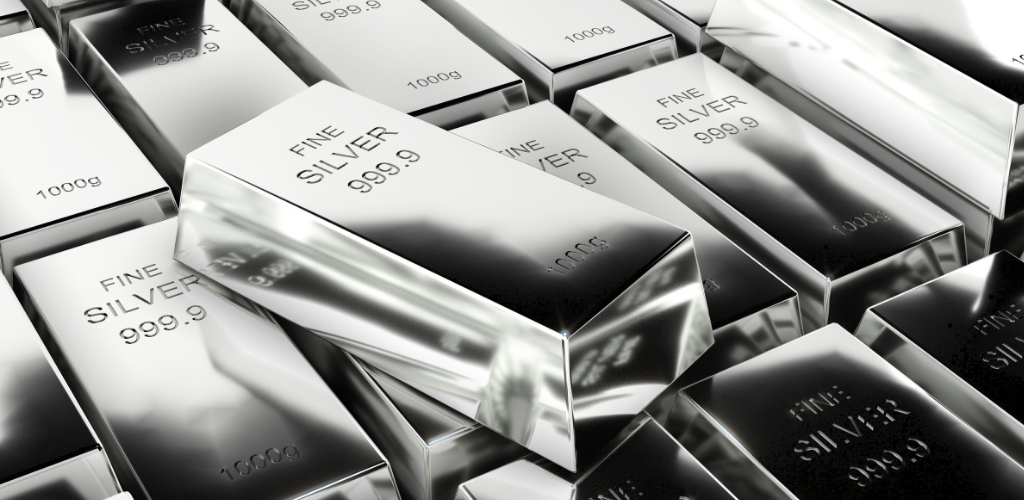
Investing in Silver: Pros and Cons
Consider these benefits of investing in silver:
- Higher Returns than Gold – Silver is often more affordable than gold, and it yields higher returns. The spot price of silver moves more than gold prices, even if they’re trending in similar directions. Therefore, you can expect more gain exposure, depending on your investment strategies.
- Versatility – Silver is an industrial metal and is found in many industrial appliances because of its rust resistance and high conductivity. Technological innovations might include medical products, energy cells, electronics, and industrial products.
- Safe-haven Investment – Silver is considered a safe-haven metal that will help you hedge against inflation. One recent example is when silver prices rose when COVID-19 hit in 2020. Uncertainty in the world drove silver up 45 percent in that year. Likewise, major governments and central banks altered their fiscal policies to offer stimulus packages, so there was a rush for this precious metal.
Here are the drawbacks of investing in silver:
- Fear Equals Negative Price Jumps – Fear is the driving force for precious metals and raises the price significantly and unpredictably. In many cases, it’s hard to determine why prices behave the way they do. This can work against or for an investor, so it’s wise to invest with your mind and not your heart.
- Hard to Sell – Though it’s possible to see the spot price of silver at any time, you can only sell it for what someone is willing to pay. This makes it much harder to sell. Plus, we have to be honest here: people prefer gold over silver.
Silver’s Historical Performance
Silver prices are often dictated by the market conditions, so it depends on various factors. This is similar to other precious metals. Plus, it’s used as an industrial metal for appliances, solar panels, batteries, and even medicine.
Platinum
If you’re interested in investing in rare metals, platinum should be on your list. It’s traded and priced on the market like gold and silver, but there is much less of it available. Therefore, you could drive up the price. Still, it’s strong, malleable, and a good conductor of electricity.
Investing in Platinum: Pros and Cons
Consider these benefits of investing in platinum:
- Volatility – Because platinum is so volatile, you have the potential to earn higher returns compared to gold or silver.
- Diversification – Investing in platinum could help you diversify your portfolio, especially if you hold it for the long term. When you have it in your portfolio and include other investments, such as bonds and stocks, you can reduce your risk and have a balanced strategy.
Here are the drawbacks of investing in platinum:
- Higher Volatility – Volatility can be both a drawback and a benefit. If you prefer a lower risk when investing, you may want to stay away from platinum.
- Lower Liquidity – It’s not easy to find platinum because it’s only mined in Russia, Canada, and South Africa. Therefore, you may find it hard to buy and sell in smaller markets. Expect to see fewer platinum products available, longer wait times for orders, and other issues.
Platinum’s Historical Performance
Platinum is in almost everything and is popular in the automotive industry. It is one of the underlying metals in catalytic converters, and it’s not as easy to get, which makes platinum prices higher than silver and gold.
Since most of the platinum of the world is mined from Russia, Canada, and South Africa, it’s challenging to source. Therefore, volatility is rampant, especially when it comes to geopolitical conditions.
Palladium
Though palladium received media attention during the pandemic, it’s not as well-known as platinum, silver, or gold. However, it could still be a wise investment option.
Investing in Palladium: Pros and Cons
Consider these benefits of investing in palladium:
- Industrial Demand – Palladium is essential in the automotive industry because it’s one of the most important components for catalytic converters. There’s a global push for stricter standards for emissions, so palladium demands should remain strong.
- Diversification – If you invest in palladium, you can diversify your portfolio and go beyond traditional assets (bonds and stocks). This will enhance your chance for higher returns and lower your risk.
- Limited Supply – Palladium is a rare metal and is only mined in a few countries. Therefore, it features a limited supply, which can raise its value.
Here are the drawbacks of investing in palladium:
- Geopolitical Risks – Since much of the world’s palladium supply is from Russia, any changes in exports or supply disruptions could impact the price you pay.
- Liquidity – The palladium market is much smaller than gold and silver. Therefore, you can expect lower liquidity. This means it’s harder to sell or buy it quickly without affecting market prices.
Palladium’s Historical Performance
In 2021, palladium hit an all-time high because thieves were stealing catalytic converters to get to the precious metal. Though the price has come back down since then, palladium has many applications, such as in dentistry (fillings and crowns), jewelry, fuel cells, hydrogenation for unsaturated hydrocarbons, electronics, and industrial products.
Approaches to Precious Metals Investment
Investing in precious metals can take many forms. It’s important to understand your investment objectives to determine which option is the right choice for you. Here are the approaches you could take:

Coins and Bullion Investment
If you wish for an investment you could see, hold, and touch, it’s wise to buy precious metals in rounds, bars, coins, and ingots. Physical gold and other metals can be purchased from a reputable online dealer or your local currency exchange.
The value of the bullion will vary based on the type of metal you choose, along with its weight, rarity, and age. Before buying, you should research your options to ensure you have physical assets you feel comfortable with. As it so happens, we have an article that can give you a proper introduction to bullion investment.
Mining Stocks and Mutual Funds
You can also invest in mutual funds and mining stocks. This is a great option for investors who are experienced in selling and buying traditional equities and understand the factors that drive market activity. Ultimately, this includes political events, natural events, and macroeconomic trends.
Mutual funds and mining company stocks can be bought and sold just as stocks on the stock market. Make sure you understand that the prices can be influenced by market pressures more than the precious metal itself.
Ultimately, you should add mining company stocks and mutual funds to your precious metals portfolio for diversification!
Exchange-traded Funds (ETFs) for Precious Metals
Exchange-traded funds are a type of security where investors pool money together into funds that own different financial assets. These include bonds, stocks, futures contracts, currencies, and/or commodities (like physical metals.)
If you’re dealing with a precious metal exchange-traded fund, this can include holding physical precious metals, shares from production and mining companies, or both.
Precious Metals Futures Trading
Investing in futures is often found with commodities. Ultimately, if you invest in futures, you’re agreeing to buy the assets at a specified price later. This comes with an elevated risk, but precious metals investors who are willing to do this can experience lucrative outcomes. However, considerable losses are possible, as well. It’s generally wise to become a professional investor first.
Precious Metals in Individual Retirement Accounts (IRAs)
It’s important to first begin understanding Individual Retirement Accounts. If you wish to fund your retirement with precious metal investments, you will need an one such account, which would actually be called a Gold IRA. Typically, precious metal IRAs work similarly to traditional IRAs and will help you achieve your goals.
However, you should understand that this is a self-directed IRA. You will buy precious metals and store them in a depository for safekeeping. In most cases, they maintain a high economic value, but there are chances for the price to dip down. It’s wise to speak with a financial advisor to see if this long-term investment option is best for you.
Potential Returns from Precious Metals Investment
Wanting to invest in precious metals is a good thing for most people and situations. Because it has a store of value and tends to fare well when fiat currencies falter, it’s a great choice for long-term investment. Still, you probably wonder about the potential returns. Let’s focus more on this now:
Factors Impacting Return on Investment
Here are the factors that can impact your return on investment in the precious metals market:
- Global Economy – The price of precious metals is tied to the health of the economy as a whole. During times of growth, people invest in assets that are deemed riskier, such as shares and stocks. Therefore, selling gold is much harder because the physical metal is simply not worth as much. However, when there’s a downturn in the economy, the demand for precious metals increases, which raises the price.
- Monetary Policies and Interest Rates – Central banks are crucial in shaping the price of precious metals through their decisions on interest rates and monetary policies. Therefore, investors must monitor them closely to see the full activity. Lower interest rates make savings accounts and bonds less attractive, so investors often turn to metal. However, when the interest rate rises, investors move away from precious metals.
- Inflation Trends – Gold and silver are seen as a hedge against inflation whenever fiat currencies lose their value because of rising inflation. Therefore, it’s wise to track these trends to indicate when you should invest and how.
Precious Metals’ Historical Returns Analysis
Most people see gold (precious metals) as a fascinating asset because they have been around since the beginning of time. Gold has the longest paper trail and price data available.
In the past, gold was considered a currency. An ounce of it could buy a man’s suit during Shakespeare’s time. Even with the fiat currency era, the real return on gold is almost zero. In 1926, gold’s price was just $20.67 per ounce. Now, it’s right around $380. The return during that 70 years is about 4.2 percent per year, which is about one percent higher than inflation.
Looking at the past performance of precious metals will help you understand the return on investment you might experience. It’s pretty low compared to other products. However, many investors feel that it is important to have, even if you only allocate five to 10 percent of your capital to it.
Evaluating Precious Metals’ Profit Potential
There is no cash flow available with precious metals, so you don’t receive an income if you buy and store it. However, you can get around that if you choose ETFs or IRAs. Likewise, when you go to sell it, you might find that no one wants it or isn’t willing to pay what you want. This can be problematic if you find yourself in need of money quickly.
Risk Assessment in Precious Metals Investment
Precious metals are vulnerable to risks, so it’s important to understand what they are before deciding to include them in your portfolio:
Navigating Market Volatility
There’s a finite supply of gold and other precious metals, and it’s not easy to obtain them. In fact, the precious metals market focuses on extraction from mines. The goods are then molded, tested, and treated before they are shipped to you.
Price volatility is also a concern. Though it’s not as volatile as cryptocurrency, you can still expect fluctuations throughout the years, making it hard to know when to sell for the best price.
Economic Factors Influencing Risk
When things are going well in the global economy, precious metals tend to do poorly. It’s considered a safe-haven asset, so it’s there when fiat currency fails or falters. Currently, precious metal investing might be wise because the world is in turmoil, but that won’t always be the case.
Regulatory Risks and Compliance
If you want to be part of the precious metals sector, you must consider regulatory risks. Gold and silver transactions aren’t regulated by any government entity. Therefore, if you get swindled, you’re out the money.
Likewise, there are rules in place, especially if you choose to own a gold IRA. You must be compliant with everything and understand the laws.
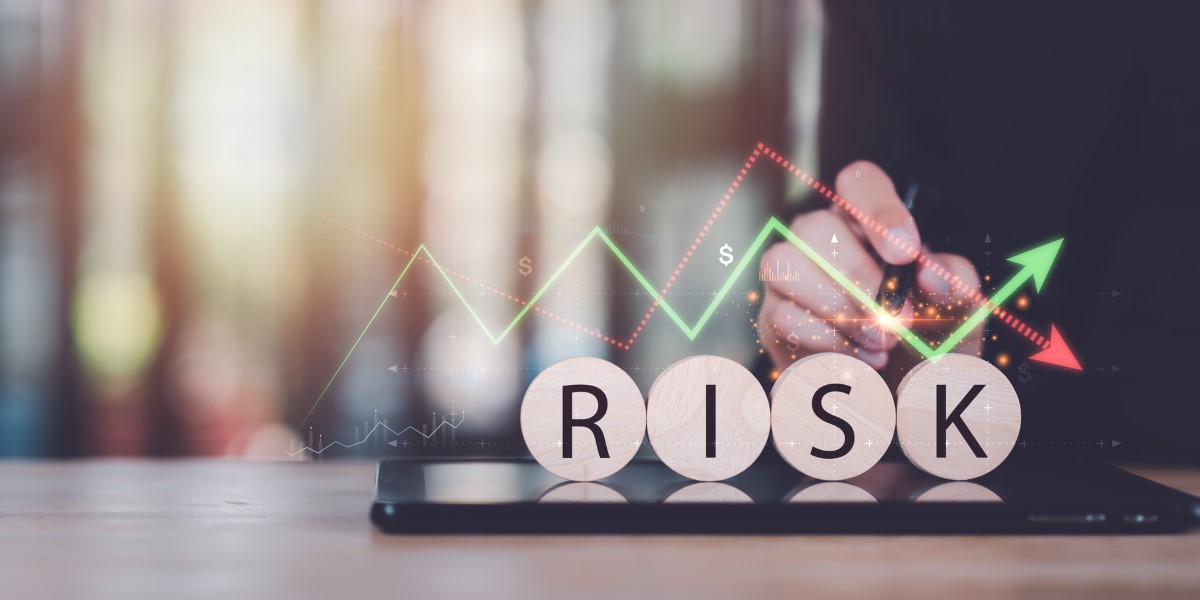
Risk Management Strategies in Precious Metals Investment
One of the best risk management strategies for precious metals is to diversify your portfolio. Spread everything out across many asset classes.
Investment Guru Insights: Warren Buffett on Precious Metals
Warren Buffett is a philanthropist, investor, and businessman who has had investment success throughout the years. In fact, he’s the most well-known investor in the world, and his net worth is $122 billion (January 2024). Therefore, he’s also the richest man in the world!
Let’s learn more about his thoughts on precious metals:
Buffett’s Investment Philosophy
Buffett uses the Benjamin Graham School for value investing. Ultimately, he focuses on securities and other products that bring value to the world at a price that is quite low, even with their intrinsic worth.
Buffett’s Stance on Precious Metals
Ultimately, Warren Buffett isn’t a fan of precious metals. He emphasizes that it’s best to invest in productive assets that can generate income. This includes stocks, real estate, bonds, and more.
Applying Buffett’s Insights to Precious Metals Investment
Warren Buffett isn’t a fan of gold because it lacks value and is not useful. However, other precious metals have practical purposes, such as silver, palladium, and platinum.
Frequently Asked Questions
Which Precious Metal Is the Best Investment Option for Beginners?
If you wish to invest in precious metals, you should probably stick with gold initially. You can choose gold IRAs, gold futures, gold-leveraged ETFs, stocks from gold miners, and physical gold. Historically, gold will hold its long-term value and is often better than other metals.
How Much Should One Invest In Physical Precious Metals?
The amount of money you invest in precious metals will depend on various factors. Consider your long- and short-term investment goals, the capital you’re willing to put in, and what other investments you have. Likewise, you must check the current market state and determine what’s ideal for you.
Most professionals recommend that you invest anywhere from five to 10 percent of your total capital in precious metals.
What Are the Potential Returns on Investing in Gold and Other Precious Metals?
Before you invest in precious metals, you should understand the potential returns available. Ultimately, they’re considered commodities, which will help you determine their asset allocations.
Precious metals are considered global assets and feature similar storage treatment and physical production as other commodities, such as agriculture, base metals, and energy. Typically, precious metals see an 8.3 percent return, but commodities only have a 1.24 percent return.
What Are the Risks Associated with Investing in Precious Metals?
The biggest risk associated with precious metals is price volatility. Various factors could drive the price up or down, such as inflation, mining supply, investor demand, Federal Reserve policy changes, and economic changes.
Likewise, each investment style can carry different risk factors. For example, mining companies might experience mismanagement, higher costs when opening a new mine supply, and other financial issues. There is also a correlation between this and the stock market, which might cause precious metals pricing to underperform.
You also have to think about cryptocurrency and precious metal investing. Crypto assets feature similar investment properties as silver and gold. They are both a store of value and could hedge against inflation and other risks. Since many investors are turning to cryptocurrency, the investor demand for silver and gold might diminish and lower prices.
What Is Warren Buffett’s Opinion on Investing in Precious Metals?
Ultimately, Warren Buffett doesn’t put much emphasis on precious metals. He tends to focus more on investing in productive assets that generate income, such as farms, real estate, stocks, and bonds.
Conclusion
When building an investment portfolio, it’s wise to invest in precious metals. It’s ideal for all types of investors, wealth amounts, and more.
Ultimately, the goal is to know your investment purposes. Are you focused on direct investment of a physical asset, or do you want to be involved in industrial applications, such as the computer industry? Precious metal investing isn’t for everyone, and it’s wise to speak with a financial advisor before diving in.
Today, you learned about the benefits and risks of investing in precious metals, the methods available, and how they could help you diversify and hedge against inflation!

